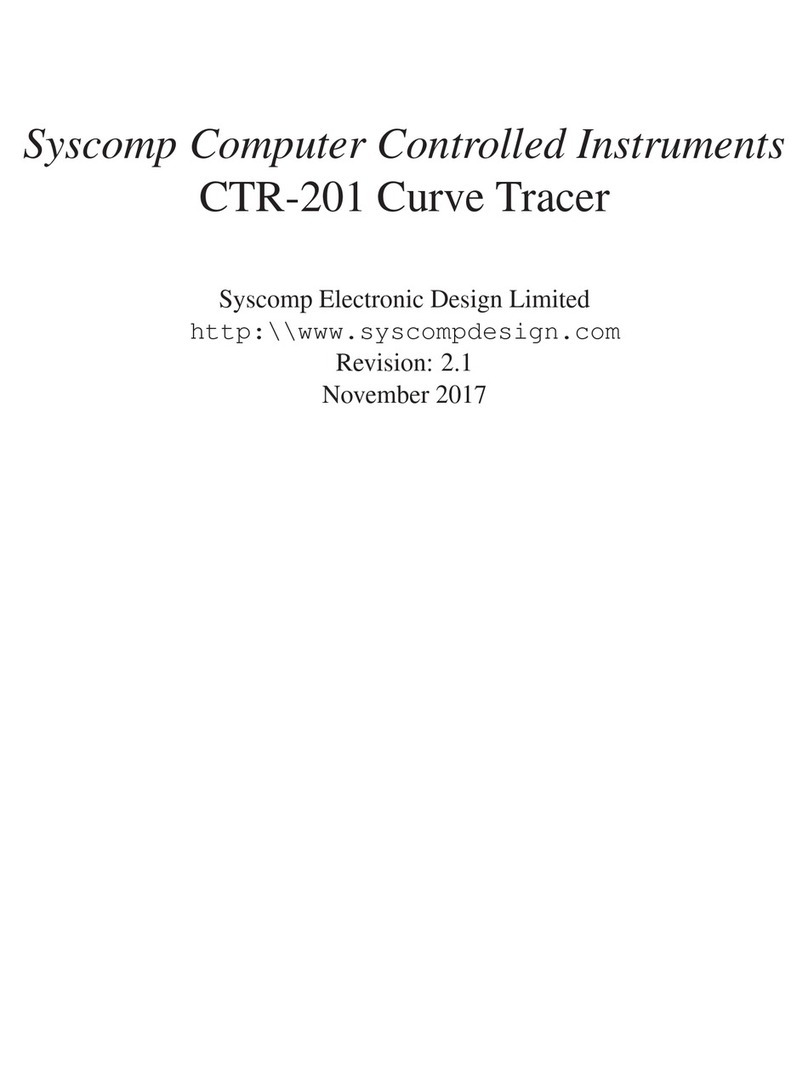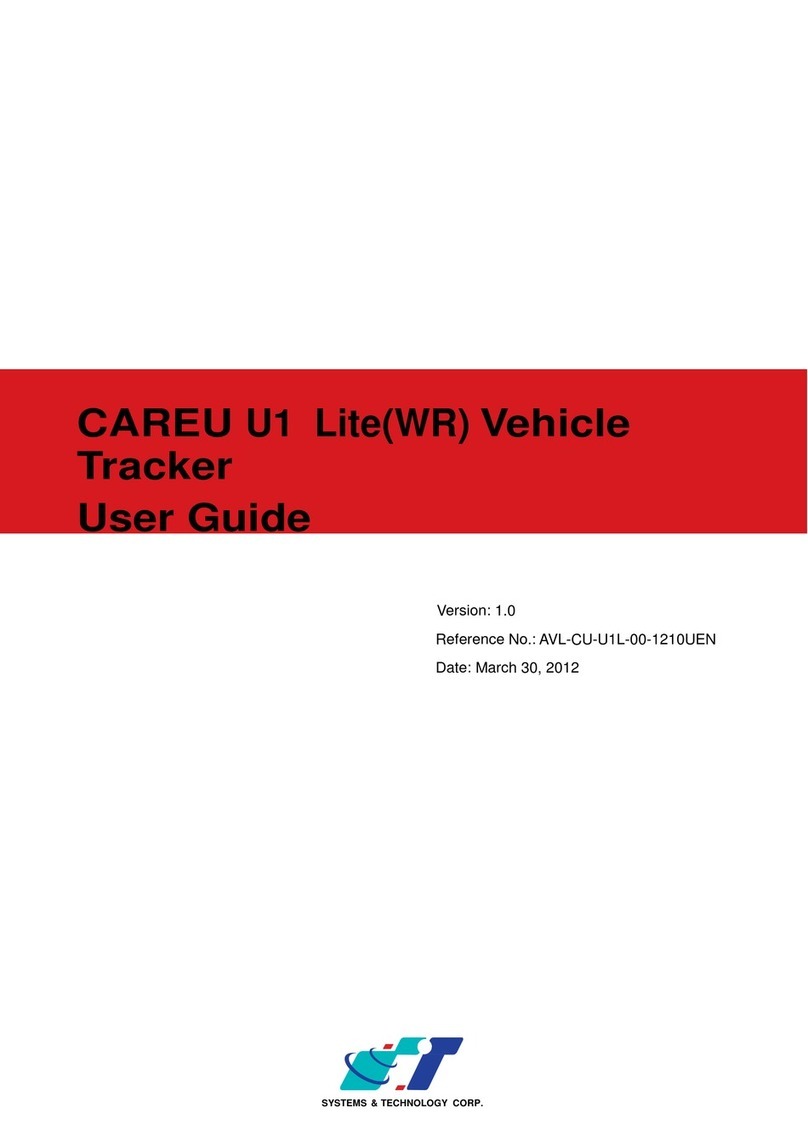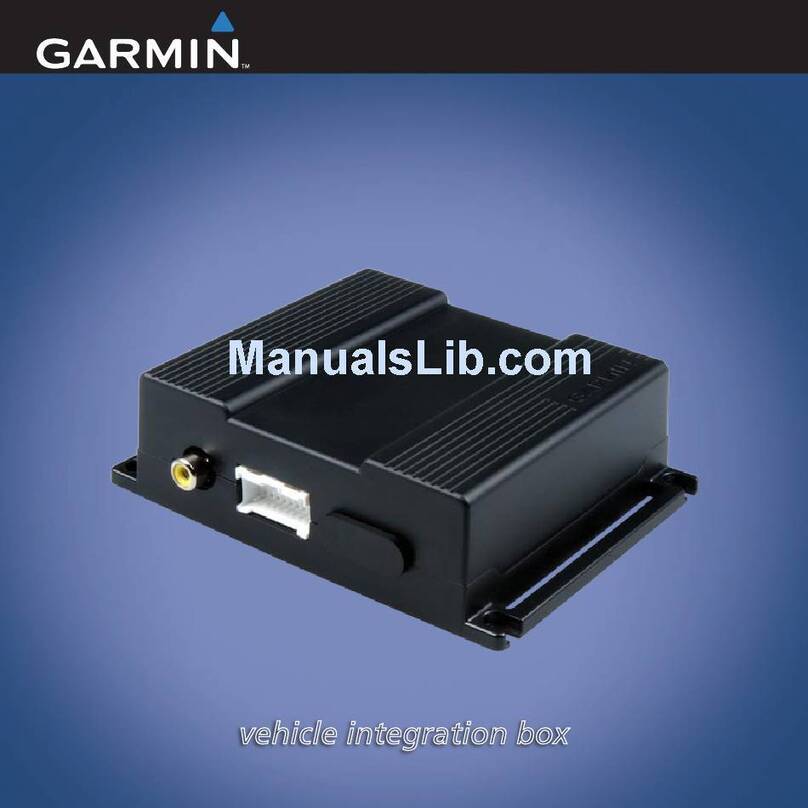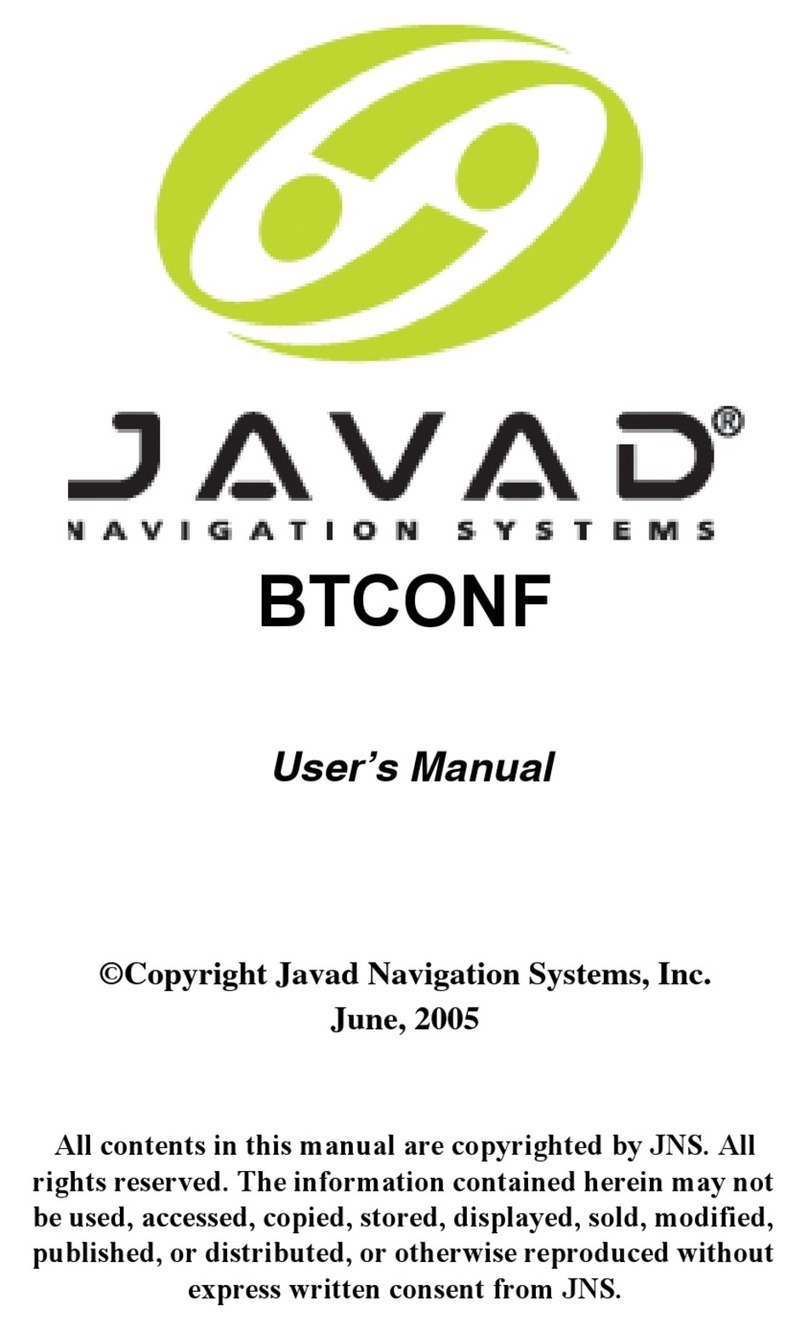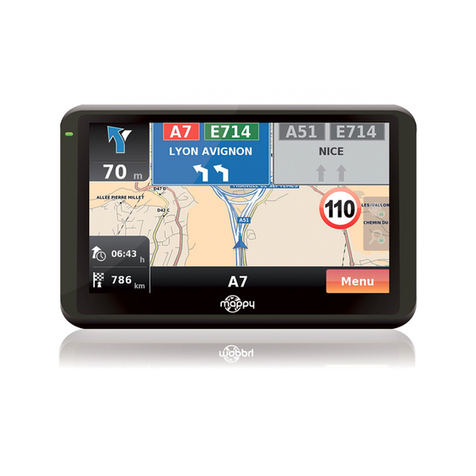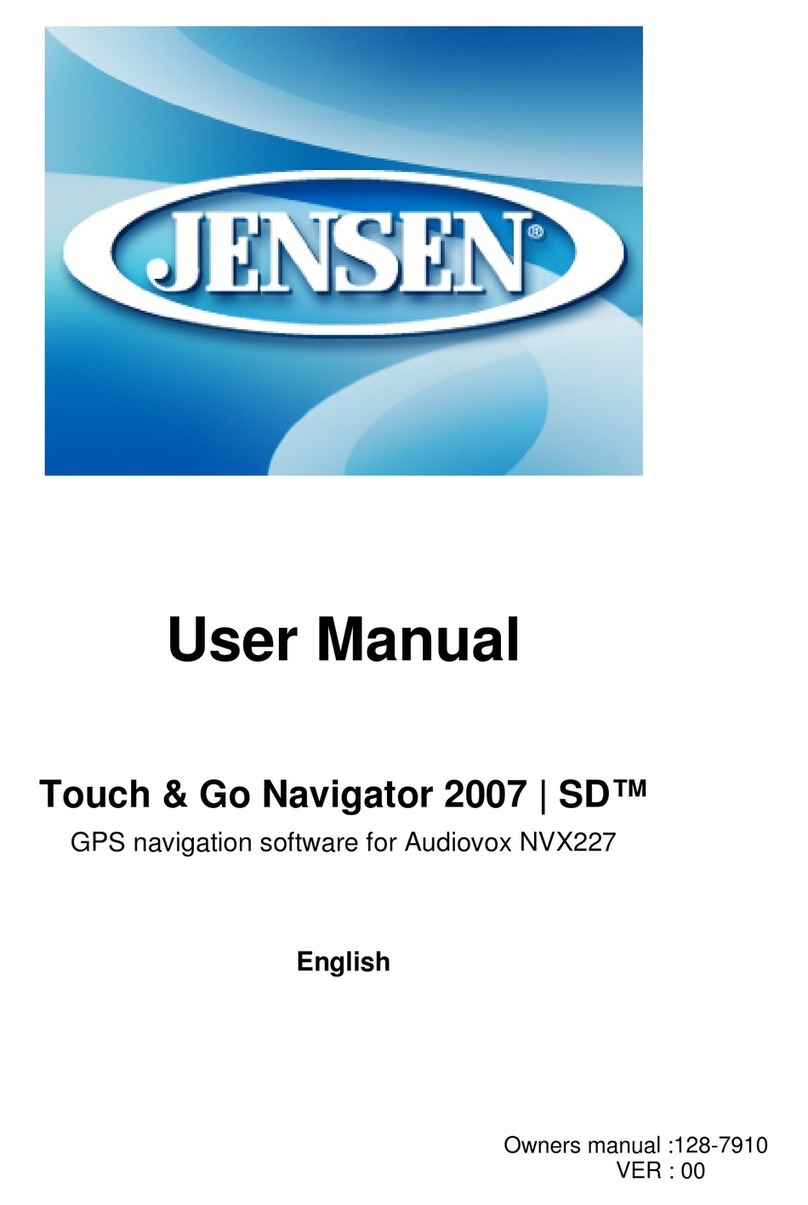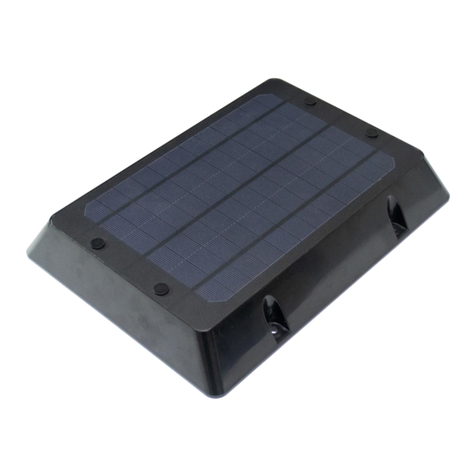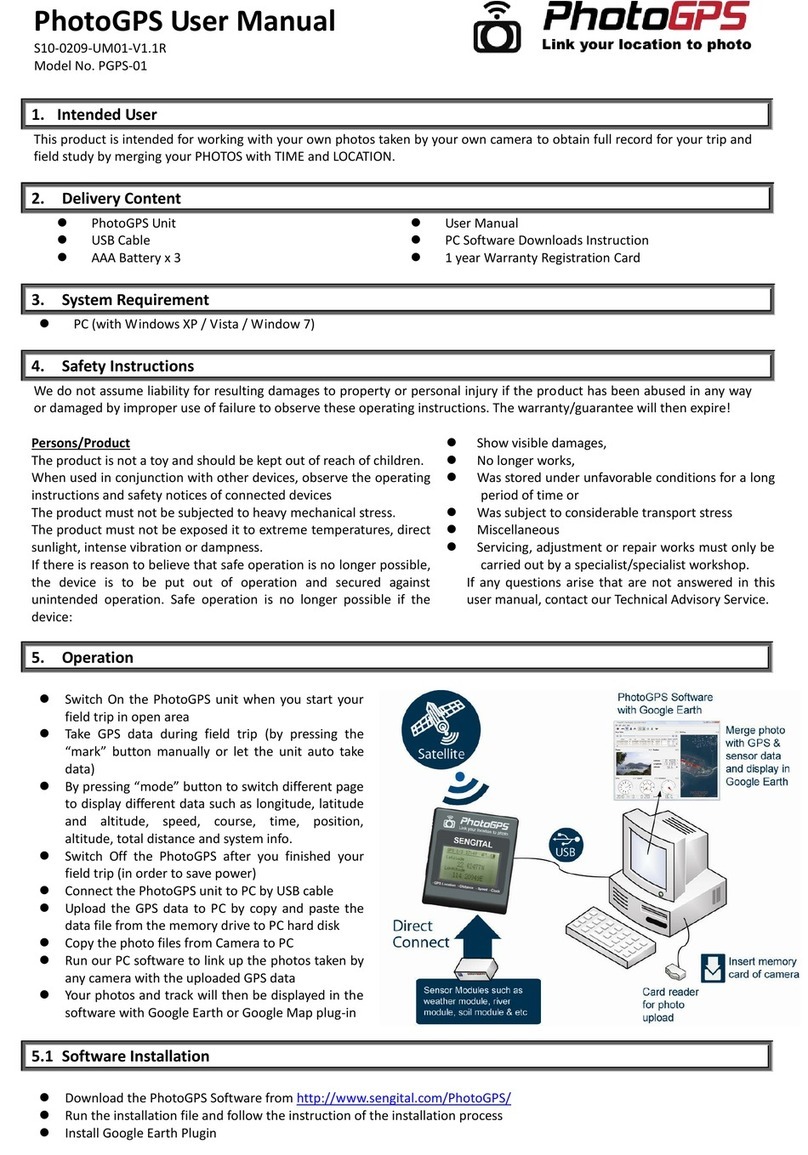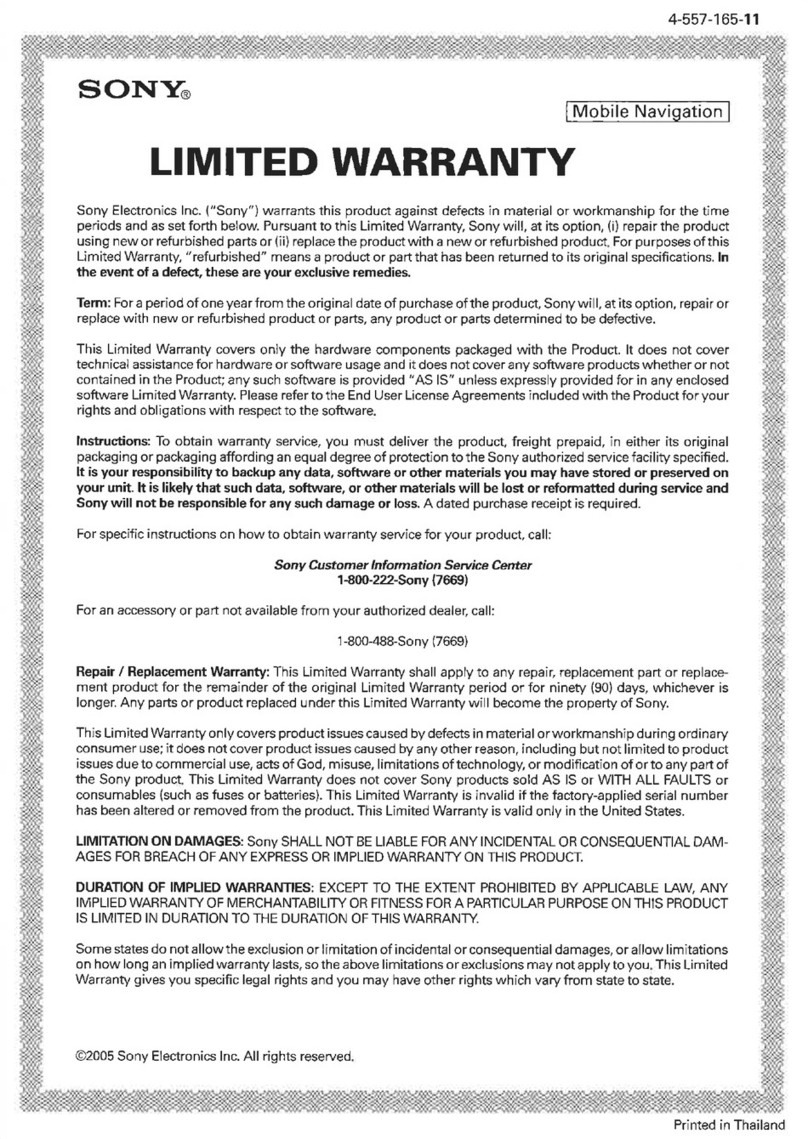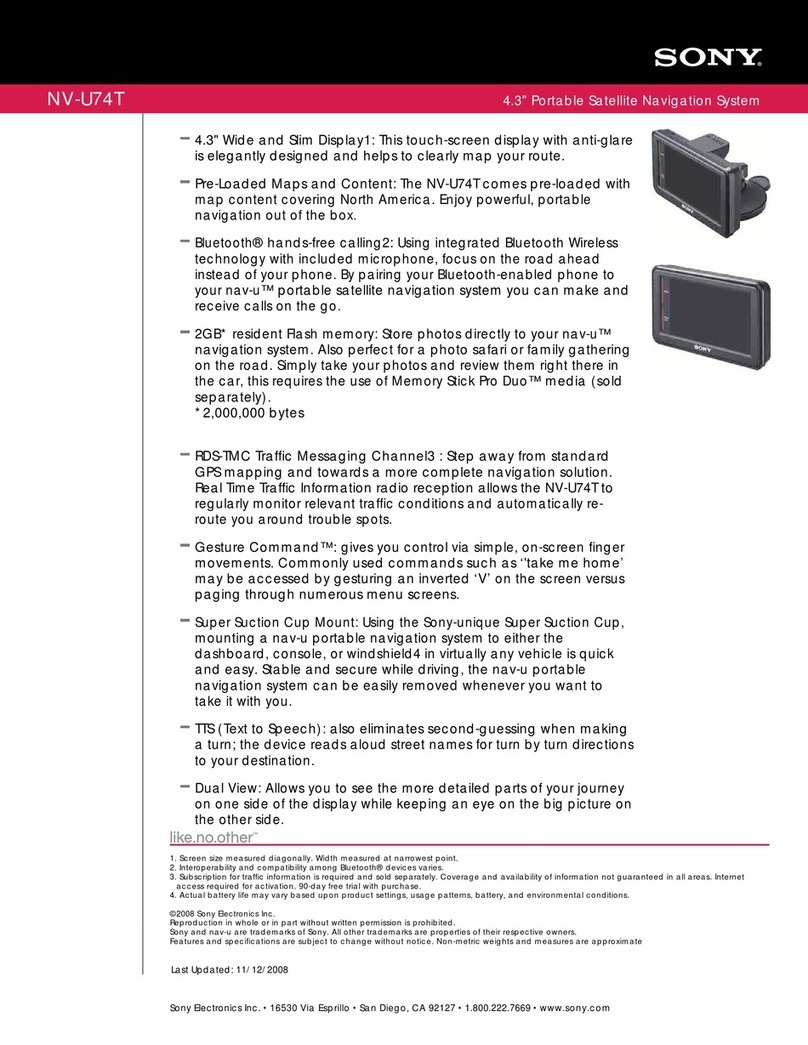Aeritech NB ONE+ Guide

Phil did it!
Thanks to the helpers
I have been able to put this Manual together with the help through the work of a
few people from
https://www rcgroups com
who are
paultbg, who wrote a short summary about the standard NB ONE
marbelo, who also wrote a short summary about the standard NB ONE as well as
provided a link to an english Manual in excellent print quality
T_Hammer - who provided me with an Excel File for the Manual of the NB ONE+
which finally provided the best information
Note
I have tried to emphasize certain Terms
FlightController This is this board NB ONE+
RemoteControl The Remote Control Unit you have in your hands
Remote Control Receiver The receiver of your remote control system
2 of 21

Phil did it!
Content of elivery
3 of 21

Phil did it!
Inhaltsverzeichnis
NB ONE+ Flight Controller 1
Content of Delivery 3
Product characteristics 5
Description 6
(1) Dip Switches 6
Selection of aircraft type 6
Adjustment of servo direction 6
(2) Servo connections 7
(3) Remote Control Receiver Wiring 8
Receiver OUT to FlightController IN 8
Mode Switch 8
(4) Flight Controller Installation 9
(5) Potis S and R 10
Poti „S“ 10
Poti „R“ 10
(6) Power ON 11
LED Status Indication 11
Calibration of Neutral Point in RemoteControl 12
Special NOTE: 12
(7) Servo Direction Setting – RemoteController 14
(8) Servo Direction Setting – FlightController 15
1 ) Roll DIP-SWITCH 3 15
2 ) Pitch DIP-SWITCH 4 15
3 ) Yaw DIP-SWITCH 5 15
(9) Flight Modes 16
1) Fixed Height Mode – Attitude / Altitude Hold - Aquire Mode 16
2 ) Manual Mode 17
3 ) Fenced Mode (GPS) 17
From Online Descriptions of Sales Shops 19
4 of 21

Phil did it!
5 of 21

Phil did it!
Product characteristics
This is a Flight Controller for fixed-wing aircrafts
This product supports three aircraft types: T-tail, V-tail and delta wing
It provides three flight modes:
•(1) Stabilization On, Attitude Mode, Altitude / Fixed height Mode*
•(2) Manual Mode
•(3) Return to Home (RTH) GPS Fence Modes + Altitude / Attitude Mode
* Unique barometer altitude hold mode, easy to operate, safe flight, specially recommended for
beginners
Specification:
•Product size : 40*25*5 mm
•Weight : 4g
•Working voltage : 5V-16V
•Working current : 20mA
•Working temperature : -15°C - 65°C
•Gyro sensitivity: 2000sec/s
•Suitable servo: 1 52ms analog or digital servo
•Remote control compatibility : PPM, PCM, 2 4G
•32 Bit processor HK32f103c8t6 (Compatible to Replace
Stm32f103c8t6)
•high-precision barometer Type not recognizable
•6-axis sensors Invensense MPU-6050*
*The MPU-60X0 is the world’s first integrated 6-axis MotionTracking device that combines a 3-axis
gyroscope, 3-axis accelerometer, and a Digital Motion Processor™ (DMP) all in a small 4x4x0 9mm
package
6 of 21

Phil did it!
escription
(1) Dip Switches
Selection of aircraft type
Use Dip Switches 1 and 2 to select the aircraft type
#2 ON is for a regular plane
Adjustment of servo direction
I do not quite understand
the meaning of this graphic!!
7 of 21

Phil did it!
(2) Servo connections
Connect the servos to the respective OUT Ports of the FlightController
For the Aileron Out you need a Y-Cable to connect 2 Servos for separate aileron controls
Connect the GPS Antenna to the respective port on the FlightController
OUT to Servos
Aileron
Elevator
Throttle
Rudder
GPS
S + -
IN from Receiver
Aileron
Elevator
Throttle
Rudder
Mode Select
”THR_OUT_3” channel is connected to the ESC for all models
Aileron servo 1 I
Aileron servo 2 I T-tail
Elevator servo I V-Tail
Rudder servo I
Aileron servo 1 I
Aileron servo 2 I Delta wing
Rudder servo I
From NB ONE Manual
8 of 21

Phil did it!
(3) Remote Control Receiver Wiring
Prepare a PWM receiver with at least 5 channels and corresponding RemoteControl
The RemoteController should be set to the Fixed-Wing mode
NOTE: For the V-tail and flying wing the flight controller will automatically mix controls
without the need for remote control settings
NOTE: No matter what type of aircraft you use five channels from the receiver must
always be connected, otherwise the self-test of the FlightController cannot pass when it
is powered on
The connection between the Remote Control Receiver and the Flight Control is shown
below:
S + -
IN from Receiver
Aileron
Elevator
Throttle
Rudder
Mode Select Switch
Receiver OUT to FlightController IN
Connect the provided short cables from the respective ports of the Receiver to the IN ports on
the FlightController
Mode Switch
You will need a three position Switch on your RemoteController to control the Modes of the
FlightController:
The Modes are
1 Stabilization ON
2 Stabilization OFF
3 Return to Home GPS ON
“On my Taranis (with OPENTX firmware as well the three pos. switch is set at -100%, 0% and
+100%. You may check if your switch setup is correct.”
9 of 21

Phil did it!
(4) Flight Controller Installation
---> Direction of Nose
The FlightController can only be mounted as described above, horizontally and the arrow must
be pointed to the nose!
From NB ONE Reviews
•the unit needs to be mounted perfectly leveled with the plane as you cannot offset any
differences (there is no menu)
•the gyro can not be mounted in other position (side,etc), the reason is the same as
above; it is highly advisable to mount the gyro as close as possible to the COG of the
plane
•you need to connect ALL the input channels coming from the receiver even if you DO
NOT USE THEM, otherwise the unit will not engage; if you do not need the rudder for
example just disconnect the servo from the output
This is also valid for the NB ONE+ FlightController !!
10 of 21

Phil did it!
(5) Potis S and R
S R
Poti „S“
The Poti „S“ adjusts the control sensitivity of the aircraft
clockwise adjusts it to increase sensitivity
Poti „R“
The Poti “R” adjusts the radius of the FENCE mode 100 - 300m
clockwise adjusts it to increase the radius
NOTE:
For the first test flight please turn the Poti “R” to the smallest position so as to test
whether the return function is normal
To test this function the Mode Switch must be in the (3) Return to Home (RTH) GPS Fence
Mode
11 of 21

Phil did it!
(6) Power ON
NOTE: For the first time please remove the propeller to avoid injuries
After Power-On the aircraft needs to be motionless for the initial stage to be completed
This process can take up to 10 seconds
When the initial stage is completed the sound of the ESC can be heard
LE Status Indication
The RED LED is showing the status of the GPS
The GREEN LED is showing the Control Mode that the User has selected
Mode Green LE Red LE Instructions
(2) Manual OFF
Flashes
GPS not connected
(1) Stabilisation ON
NO GPS
Att / Alt Mode
Flash
GPS is connected but the accuracy
is not sufficient
(3) Stabilisation ON
GPS ON
Att / Alt /Fence Mode
Constant ON Constant ON GPS Connected satisfactorily
12 of 21

Phil did it!
Calibration of Neutral Point in RemoteControl
First storage of ZERO postions for the sticks
On the RemoteController put the Throttle to minimum (bottom), the other channels are in the
middle then switch the Flight Mode Switch six times quickly through all positions
After calibrating the RemoteController users are NOT ADVISED to adjust the TRIM on the
RemoteController
The Flight Controller will automatically balance the Flight when in one of the automatic modes
1 The aileron will swing up and down twice after the RemoteController calibration is completed,
indicating a successful calibration
2 Calibration is required every time the RemoteController is replaced or the TRIM on the
RemoteController is changed
3 The motor may rotate when the the RemoteController is first calibrated or when the
Power is switched ON in the aircraft – ATTENTION INJURY
This is because the throttle travel may be to high with the factory calibration Don't worry this
phenomenon will disappear after the sucessful calibration of the RemoteController
NOTE
This procedure has to be repeated after the first flight in (2) Manual Mode with the
corrected Trim settings for level flight. (see Page 18 )
Special NOTE:
Please re-calibrate the RemoteController if the following situtations occur:
A) The aircraft is slow and uncontrolled after take-off
B) The plane tilts to one side after take-off
C) When the return function is activated the aircraft does not climb
No idea how the return function can be activated!!!
13 of 21

Phil did it!
From NB ONE Reviews
NOTE
Set your radio transmitter as a normal plane (Even if you are using the flight controller on a
flying wing) The FlightController will do all the required mixing according to the plane type you
select using the dip switches
Once everything is connected, turn on the aircraft (remove your propellers when testing new
stuff!!!) The FlightController needs about 5 sec to boot and you should not move it or do
anything on your aircraft when booting is running
Once you get the confirmation signal from the ESC then you can check your moving surfaces
First step is changing the flight mode to (2) Manual Mode (LED Mode = OFF) and check if the
surfaces are moving to the right directions (If not then invert the channel on your transmitter)
After that switch to (1) Attitude Mode (equal to Stabilize for the Arduplane fellows) (LED Mode =
RED) and check if the surfaces are correcting on the right directions
If not use the screw driver and move the corresponding adjusting pot to the other side (For
instance from A to B side) to reverse the direction of the servo correction (If you are not familiar
with flight controllers ask help to an experience fellow on your airfield)
The adjusting pot is also used to adjust the gains for each channel I had good results putting
my pots at 1/4 from the top arrow
For the NB ONE+
Change Direction of the Output:
Use the screwdriver and move the respective DIP Switch into the other direction
See Page 7
14 of 21

Phil did it!
(7) Servo Direction Setting – RemoteController
This is to check for the correct operation of the servos when in (2) Manual Mode
NOTE: Adjustment of servo direction has to be done in the RemoteController!
NOTE: Remove the Propeller for this test and make sure the throttle stick is in the
bottom position
1 Switch Flight Mode Switch to (2) Manual Mode
2 Move the directional control sticks on the RemoteController in each end position and
check that the servos move in the correct direction
Correct it on the RemoteController if the direction is wrong
3 The control boards can be manually and mechanically corrected so that their initial
positions are correct ???
15 of 21

Phil did it!
(8) Servo Direction Setting – FlightController
This is to check that the controls move in the correct direction when in the Automatic Modes
(1) and (3)
NOTE: Adjustment of servo direction has to be done in the Flightcontroller unsing the
DIP Switches 3 to 5 !
NOTE: Remove the Propeller for this test and make sure the throttle stick is in the
bottom position
1 Switch Flight Mode to (1) Attitude / Altitude Mode
2 Swing the aircraft in all directions and observe the servo responses
1.) Roll IP-SWITCH 3
Swing the aircraft around the roll direction and check for the ailerons to correct in the right
direction
When rolling to the left the left aileron has to go down and the right has to go up!
2.) Pitch IP-SWITCH 4
Move the aircraft nose up and down and check the elevator for correct direction
When the nose goes up the elevator must go down!
3.) Yaw IP-SWITCH 5
Turn the aircraft around its vertical axis and check the rudder for correct direction
When turned to the right the rudder should go to the left!
If the response is in the other direction then flip the respective IP-SWITCH
16 of 21

Phil did it!
(9) Flight Modes
1) Fixed Height Mode – Attitude / Altitude Hold - Aquire Mode
This mode actually consists of 3 Modes The first is the attitude hold mode which will keep the
aircraft in level flight The second Mode is the Altitude hold Mode which assures a safe altitude
for flighing (35m) The third mode is the Altitude aquire Mode which allows for a semi-automatic
take-off as described below
Flying mode suitable for novice and FPV enthusiasts
In this mode the aircraft will fly level after you release the Sticks on the RemoteControl
The Aircraft can flip freely and it will return to this mode when the control stick is back in the
middle position
From NB ONE Reviews
The best mode to fly this unit; the gyro is doing a very good job in keeping the airplane level; I
didn't noticed any over correction or fluttering on the flying surfaces; the plane flew really
smooth for the size
1 In this mode the aircraft should maintain an altitude of 35m
2 The aircraft can take-off directly in this mode, it will climb to this altitude automatically,
which is very helpful
3 In this mode the aircraft will maintain a minimum of 45% Throttle and the
FlightController will semi-automaticall control the Throttle thereby reducing the
possiblity of the aircraft to get out of control
•The aircraft will enter a certain height within 1 5 seconds after the pitch Stick returns to
center position
•Push the Throttle Stick to a high power position to provide higher power for the aircraft
From NB ONE Reviews
In this mode you are supposed to give 10% throttle and then the gyro will take over, full throttle
and take the airplane up to 35 meters height and keep it at that height while you are flying
around. Well that's in theory at least as in practice was a bit different...
17 of 21

Phil did it!
2.) Manual Mode
The FlightController will not interfere with the signals from the RemoteControl / YOUR INPUTS
You have full control over the aircraft
From NB ONE Reviews
Not too many details here, use this mode to trim the plane in the first flight; once trimmed, land
the plane and "teach" the gyro the new zero position of the sticks; in order to do that you will
need to move the "MODE" switch for 6 times quickly going through all three positions
The FlightController will "acknowledge" the new settings by waving the ailerons twice
3.) Fenced Mode (GPS)
In this mode the aircraft will fly within the selected radius, which is here called the fence, and be
fully stabilized
If the border of this range is reached the aircraft will automatically return to its starting point and
start circling unless you move your control sticks, which will stop the return
A) Understanding of electronic fence mode
On the FlightController you can set the radius of 100-300 meters of electronic fence
with the Poti “R”
With the GPS module installed and connected the fence mode is activated once the GPS
has logged on – RED LED is ON constantly
When the aircraft reaches the set fence boundary, it will take the initiative to return
It should be noted here that when starting the fence mode, the aircraft will not return
immediately, but must fly to the set distance to start the return automatically
B) During the return flight, the throttle will be controlled by FlightController
When the aircraft arrives at the take-off point, it will circle over the take-off point
At this time, pulling the aileron or elevator will release the return circle Therefore, during
the return flight, please do not pull the remote stick Only when the aircraft reaches the
set point, should the aileron or elevator stick be moved
C) With regard to one-click return flight, such as using Manual or Stabilized mode, flying
out of the fence radius, then switching the Fence Mode ON, the aircraft will return
immediately
Outside the fence, all control of the aircraft is controlled by the FlightController
When the aircraft enters the fence, the aileron or elevator can cancel the return flight
Keep in mind that the Fence Mode is not a key return to home, but lets the aircraft fly within the
set radius
Only when the aircraft reaches the set radius position, it will start the automatic return flight
Please do not move any RemoteController stick during the return flight
18 of 21

Phil did it!
Is it 100 +m or 150+m???
NOTES
On a new flight location for it takes about 7 minutes for the first GPS positioning; the second
time positioning is faster
The light on the GPS module is not the basis for successful positioning
This depends on whether the RED light of the FlightController is always on
In addition, if the positioning is unsuccessful, the FlightController will not unlock
Only if the positioning is successful, the aircraft can start
19 of 21

Phil did it!
From Online escriptions of Sales Shops
1 Do well in installation and commissioning by referring to the instructions
2 Understanding of electronic fence:
This flight controller can set the radius of 100-300 meters of electronic fence
After carrying GPS module and starting the fence mode, when the aircraft flies to the
fence boundary, it will take the initiative to return It should be noted here that when
starting the fence mode, the aircraft will not return immediately, but must fly to the set
distance to start the return automatically
3 During the return flight, the throttle will be controlled by flight controller When the aircraft
arrives at the take-off point, it will circle over the take-off point At this time, pulling the
aileron or elevator will release the return circle Therefore, during the return flight, please
do not pull the remote stick Only when the aircraft reaches the set point, can the aileron
or elevator stick be pulled up
4 With regard to one-click return flight, such as using manual or balanced mode, flying out
of the fence radius, then switching the fence mode, the aircraft will return immediately
Outside the fence, all control of the aircraft is controlled by flight controller When the
aircraft enters the fence, the aileron or elevator can cancel the return flight Keep in mind
that the fence mode is not a key home, but let the aircraft fly within the set radius Only
when the aircraft reaches the set radius position, it will start the automatic return flight
Please do not move the remote pole during the return flight Keep in mind
5 Repeatedly check the control direction of gyroscope and the ground test of the remote
control direction (check the working direction of gyroscope first, then adjust the control
direction of remote controller)
When the remote controller handles the fence mode or the fixed height mode, the
green light flashes, pushes the throttle, the motor rotates rapidly, and the elevator goes
up On the contrary, if the elevator goes down, it cannot take off (this step is very
important)
6 When using this flight controller for the first time, or replacing the receiver, GPS module
and other equipment, the position of remote control sticks must be calibrated (in some
cases, the motor will rotate, please note) if not calibrated, otherwise the flight controller
will not be able to work properly
If the calibration is successful, the aileron will oscillate dramatically Otherwise, please
repeat the calibration
7 The flight controller can balance aileron, elevator and rudder at the same time
8 In fencing mode, you can take off with one click Push the throttle stick, and the plane will
take off on the ground and automatically rise to 35 meters
9 On a new location for flight it takes about 2 minutes for the first GPS positioning, and the
second positioning is very fast The lights on the GPS module are not the basis for
successful positioning
Mainly depends on whether the red light of the flight controller is always on In addition, if
the positioning is unsuccessful, the flight controller will not unlock Only if the positioning
is successful, the aircraft can start
10 For out-of-control return flight, please set it in remote controller
20 of 21
Table of contents



